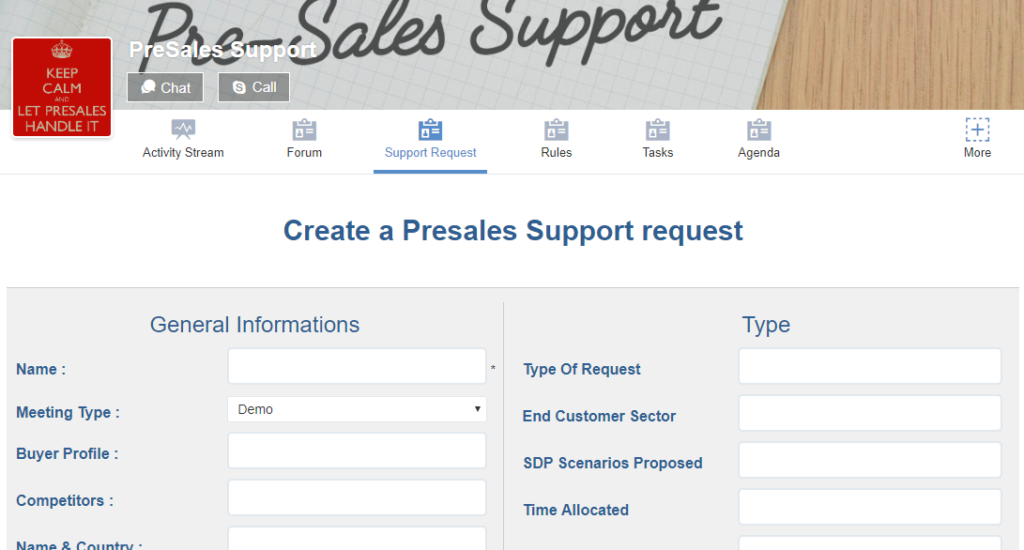
Content
#1. The open source advantage
As I’m writing this article, news have broken in that Microsoft has acquired GitHub in what seems to be yet another episode of its new love affair with open source, generally applauded by the industry. It is nice to see tech giants like this just relatively recently seeing value in and embracing what eXo had embraced since its birth 15 years ago. 🙂
At eXo, we choose to build our eXo Platform enterprise software solution on top of an open source LGPL-licensed Community Edition. Not only that but also:
- Our software embeds several 3rd-party open source components. You can learn more about these components here.
- Our mobile apps for Android and iOS are published as open source software.
- All of our community add-ons are open source.
- We do our best to support open source IT environments such as open source database solutions, SSO providers, etc. You can learn more about this here.
Often times, IT people are, above all, passionate engineers who were trained through open source technology. So they generally tend to have an affinity with open source and values such as transparency, the collective benefit, and the freedom to access the core of the software they use, learn and contribute.
But besides that, there are some other tangible benefits associated with open source software. They mainly revolve around:
- Improved ability to integrate with other software, support of open standards and avoidance of lock-in to proprietary vendor ecosystems,
- Improved software evolutivity based on growing future needs,
- Increased level of control through advantages such as software source code auditability,
- Generally lower cost of ownership,
- Improved policy compliance in some contexts,
- Some privacy and security benefits as outlined in this other article.
#2. Unify your IT setup
Organizations are increasingly suffering from the “too many tools” syndrome. IT companies are especially prone to this: In a typical scenario you’ve got engineering teams that use issue tracking tools, code repositories, etc. support teams that use ticketing software, bug tracking tools, etc. product management teams relying on project management tools, wireframing tools, etc. sales teams using a CRM, and the list goes on.
In the midst of all that you have to deal with scattered or outdated document drives and, for internal communication, you have probably got:
- email,
- chat systems, often with varying preferences from one team to another,
- some sort of corporate intranet for top down communications and/or some enterprise social network that, at least in theory, was meant to bring teams closer and reduce silos but may or may not have been sufficiently adopted and, instead, ended up being just another separate tool that management or internal comms wanted you to use.
While this situation may not be broken, it leaves much to be desired in terms of optimal organization-wide collaboration and knowledge management.
At eXo, we consider the ideal scenario to be an integrated digital workplace where a collaborative intranet is the hub of your work tools. Exactly how so varies depending on your organization’s specific needs based on real usage scenarios.
For example, if we are going to integrate the support team’s ticketing system and let the intranet build a bridge between that tool and other teams who may need to access information in it and collaborate better with the support team, then this would be done based on your specific user personas mapped to an optimized employee journey.
However, for this to be achievable in the first place, the intranet needs to not only provide a robust set of baseline collaboration capabilities but also offer a high enough level of interoperability, extensibility and flexibility in terms of roadmap management. And that’s exactly what eXo strives for through its developer-friendly approach with open standards, APIs and standard protocols, extension mechanism, digital employee experience design and user adoption expertise provided to customers.
Let’s look at a few simple examples:
- Dealing with chat tools like Slack that are attempting to act as the hub for all your collaboration but failing to do so at an organization-wide level (especially from a knowledge management perspective)? One option would be to replace that with something like eXo Chat which comes pre-integrated to your company’s collaborative hub to help you break free from the limited Slack model and manage knowledge better. More on this in future articles, especially following our upcoming Chat interface facelift, so stay tuned. 😉

- Integrate streams of activity in tools like JIRA, Sonar and Jenkins into your collaborative intranet to help keep teams on the same page.

- Integrate your code repository to your collaborative intranet. Scenarios may vary here as well. Recently a colleague of mine wrote a developer-oriented article about Vue.js where he used the example of writing a simple GitHub integration app.

- Synchronize your cloud drive (Google Drive, Dropbox, etc.) or SharePoint documents with eXo Platform, or simply completely replace them with the eXo Documents app where appropriate.
- Integrate a CRM tool like Salesforce and let your sales team collaborate better within your collaborative intranet with other teams in your organization (developers, consultants, pre-sales people) to help satisfy customers and win their business.
- Integrate an email system like Outlook and help your customer-facing teams better leverage your intranet, knowledge base and internal teams when sending email.

- Integrate video conferencing systems like Skype for Business for placing calls right from within your intranet.


#3. Streamline your internal team collaboration
There are many examples that come to mind when it comes to using eXo Platform’s collaboration features and practices to improve internal team work as well as cross-team collaboration within an IT organization. Seeing as we are an IT company ourselves, we use our own collaborative intranet residing in private staff-only areas of our community site “eXo Tribe”. Today, all of our key team and cross-team collaborative processes are integrated within it (based on our own scenarios and needs). It has become the beating heart of our digital workplace to the point where we couldn’t imagine work without it.
Evidently many of our customers have experienced the same. 😉
I will share with you a few basic examples:
- A team space: An example of a collaborative team space is our software product management team.

Here, our product teams (i.e. product managers, design team, documentation team, product marketing team and CWI team) share documents such as design proposals, team meeting recordings (we have an open/transparent teamwork policy), photos, etc. well organized under the space’s Documents app.

In the space’s wiki, we share our team procedures, detailed weekly meeting notes, plans and guidelines for specific projects and initiatives, new member on-boarding handbooks and so on—a typical and ideal usage of the wiki within a formal team context.
Tasks associated with all on-going projects undertaken by the team are assigned and updated on a daily basis within the team space’s Tasks app.

Team meetings are synchronized in the space’s calendar:

Formal asynchronous discussions and polls are held in the space’s forum:

The space’s activity stream acts as the hub aggregating activities in all of the team’s apps (document updates, wiki updates, calendar events, polls and discussions, as well as activity in external integrated apps such as issue tracking tools). It’s also a place for spontaneous shares, quick announcements and exchanges.

Notice also the Chat and Call buttons allowing members of the team, especially remote workers and people from our different offices to chat at any time as if they were sitting in the same open space office.
Of course, members from other teams can easily look for a team of experts, come to their space and ask them for help. Here for example, someone from our tech support team is asking our engineering team for help with a JIRA issue that he’s sharing with them:

- Internal support spaces: An example of this would be our “Pre-sales Support” space. Here, our sales team can request support from functional and technical consultants and experts from different teams (consulting, product video marketing, product management, etc.) when dealing with prospects who are interested in our software.

Sales reps can come here and ask questions. This helps build a searchable knowledge base of questions and answers about our software and services.
Back in March, I was standing in our booth in the Paris “intranet and enterprise social network” trade show discussing with a gentleman who had an inquiry relating to our GDPR compliance. I did not have the exact answer but I knew that we had had an internal discussion about the topic. So I got my phone out, did a quick search in our intranet and within seconds I found the discussion containing all the answers that I’ve shown to the prospect. I then tapped on the name of my colleague who had posted the answers and sent him private chat message with a follow-up question. A minute later he responded and I was able to provide timely answers (about a topic I did not yet master) to the prospect who got to witness first hand the power of a true collaborative intranet. 🙂

In this space, sales reps can also book the right expert in the company for a customer demo, technical discussion, visit, etc. using a custom-made form that automatically posts the support request in the activity stream, creates an event in the calendar and send out notifications.

Other sales support requests done here also include things like launching an RFP/RFI response effort. The sales rep would post in the space about this, build the ideal team of cross-functional experts that are needed (no matter where they are located), share the RFP/RFI documents, assign tasks with due dates, and schedule a kickoff meeting. The work progresses efficiently and everyone stays on the same page.
- On-going cross-team project spaces: An example of this is our website project space where we discuss and share tasks relating to updates and improvements to our software company’s website. Members include our COO, digital marketing team, product marketing team and a couple of external consultants from a web agency that we work with that we had invited only to this space

- Interest communities: An example of an interest community that we have on our intranet is the “Market Watch” space where we share news and updates about the tech industry, our competition, and so on.

Another example is an interest community around GDPR where anyone from any of our teams can come and learn about this important new topic for IT providers, share information and follow work around our own GDPR compliance.

- Regional office spaces: Like many IT companies, we have offices in different geographic locations. We’ve set up spaces representing these offices. The “eXo France” space is an example of this. When I go on a work trip to Paris, for example, I like to stay in our company-owned apartment at the heart of the city. To check if the apartment is available and to book it for the duration of my stay, I can use this space’s dedicated calendar. We can also use this space to coordinate around local tech events the company participates in, or to share finance and HR-related material and processes with our french jurisdiction-based employees.

- Bringing everyone together: a company-wide space such as our “eXo Employees” space allows us to do things ranging from doing top-down and bottom-up communication, to welcoming new employees, sharing on-boarding material, company event photos, polling/surveying our employees about their experience in the company and so on.


Of course there are other ways an IT company can leverage an intranet solution with a streamlined “all in one” approach like eXo Platform in order to improve team collaboration. For instance, we know that mobile workforces and the remote work trend is particularly relevant in the tech industry. A mobile collaborative intranet helps keep those teams close to the rest of the organization.
Recently we have published an infographic containing simple tips on collaborating with remote teams.
#4. Build a customer support portal
A year ago, we have successfully migrated all of our customer support operation that was running on a 3rd party ticketing system to eXo Platform—namely to private customer-restricted areas of our online community site that runs on eXo Platform. So now our customer support is running smoothly side by side with our own private collaborative intranet and we are more than happy with this move and the benefits it brings.

IT companies who are interested in this use case are invited to learn more about it here: https://www.exoplatform.com/blog/use-exo-platform-customer-service
#5. Power your collaborative software offering with the eXo OEM program
A growing number of software providers are looking to leverage collaboration and enterprise social networking software to build or reinforce their software offerings. Through our OEM program, they can embed all or part of eXo Platform in their product and sell it under their own brand while benefiting from:
- Significantly reduced time-to-market: because developing and maintaining full-blown and robust enterprise collaboration and ESN software from scratch is a huge endeavor.
- Staying relevant to your market: the tech consumer population is shifting to millenials who expect social, collaborative and conversational software user experience at their fingertips.
- Flexible software adaptable to your needs
- A competitive licensing and royalties program
- Access to expertise: technical support, technical account management, consulting, training, joint-marketing efforts, etc.
We have some interesting success stories of partners who leveraged our OEM program to our mutual benefit and that of their end-customers.
Those of you interested in this type of arrangement can learn more and reach out to us about it here.
eXo Platform 6 Free Datasheet
Download the eXo Platform 6 Datasheet and
discover all the features and benefits
discover all the features and benefits
- Tags: eXo
4/5 - (1 vote)
I am a product marketing manager for enterprise software solutions at eXo Platform. My role involves supporting and leading marketing and operational activities for our digital collaboration platform.
My contributions to this blog revolve around the exciting and fast-paced world of enterprise digital transformation, team collaboration, open-source technology and making the most out of eXo Platform.
Related posts
- All
- eXo
- Digital workplace
- Open source
- Internal communication
- Collaboration
- News
- intranet
- Future of work
- workplace
- Knowledge management
- Employee engagement
- Employee experience
- Employee productivity
- onboarding
- Employee recognition
- Change management
- Cartoon
- Digital transformation
- Infographic
- Remote work
- Tips & Tricks
- Tutorial
- Uncategorized
Leave a Reply
( Your e-mail address will not be published)
Connexion
0 Comments
Commentaires en ligne
Afficher tous les commentaires


